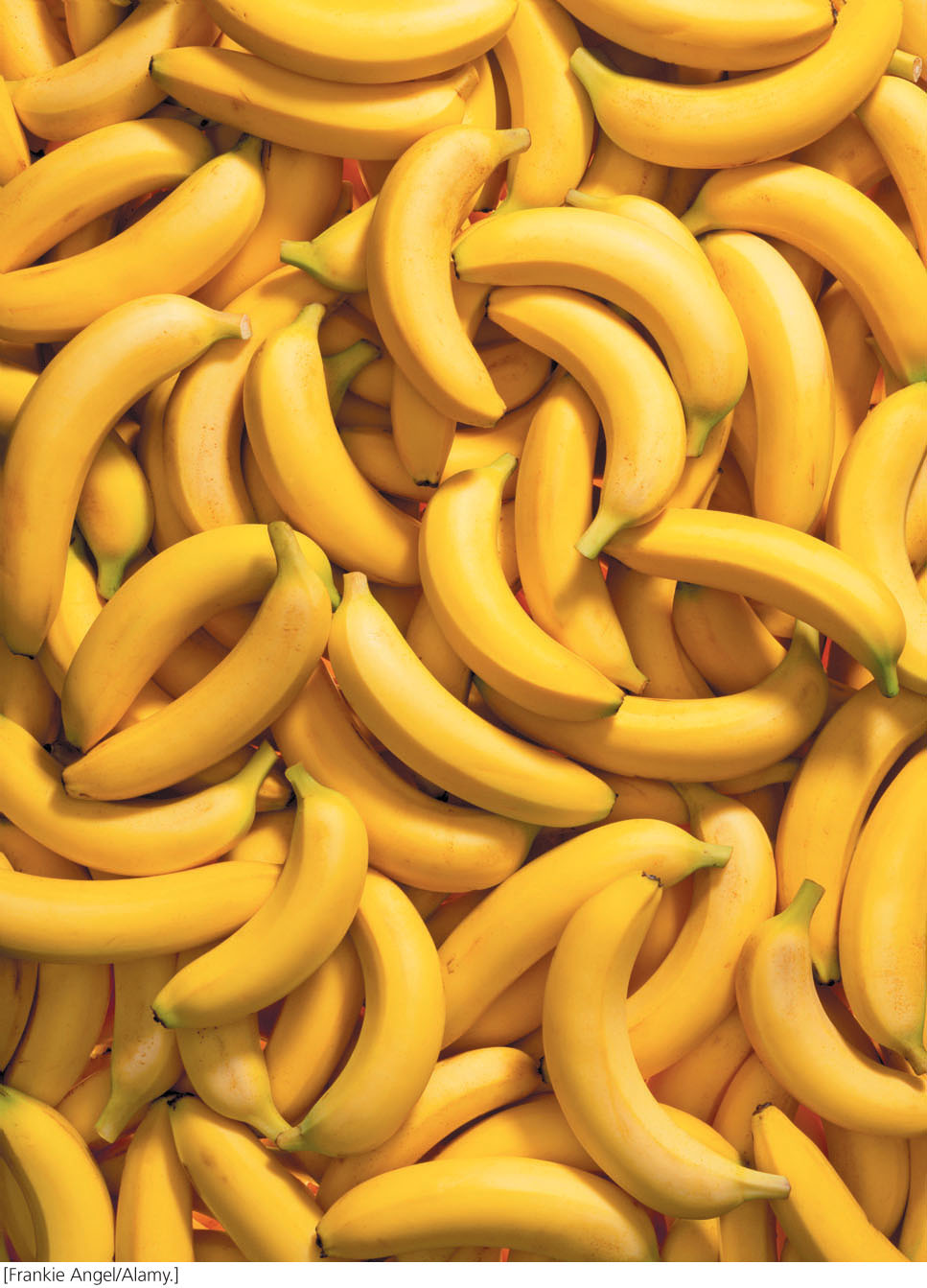Building a Better Banana

Bananas and plantains (collectively referred to as bananas) are the world’s most popular fruit. In many developing countries they are a critically important source of food, providing starch and calories for hundreds of millions of people. In industrial countries, more bananas are the consumed than any other fruit; for example, Americans consume as many pounds of bananas as apples and oranges combined. Over 100 million tons of bananas are produced annually worldwide.
There is no concrete biological distinction between bananas and plantains, but the term banana generally refers to the sweeter forms that are eaten uncooked, while the term plantain is applied to bananas that are peeled when unripe and cooked before eating. Cultivated bananas differ from their wild relatives by being seedless, which makes them more edible but hinders their reproduction. Farmers propagate bananas vegetatively, by cutting off parts of existing plants and coaxing them to grow into new plants. Because bananas are propagated vegetatively, many cultivated banana plants are genetically identical.
From a genetic standpoint, bananas are interesting because many varieties have multiple sets of chromosomes. Most eukaryotic organisms in nature are diploid (2n), with two sets of chromosomes. Others, such as fungi, are haploid (n), with a single set of chromosomes. Cultivated bananas are often polyploid, with more than two sets of chromosomes (3n, 4n, or higher). Most strains of cultivated bananas were created by crossing plants within and between two diploid species: Musa acuminata (genome = AA) and Musa balbisiana (genome = BB). Many cultivated bananas are triploid, with three sets of chromosomes, consisting of AAA, AAB, or ABB, and some bananas even have four sets of chromosomes (tetraploid) consisting of AAAA, AAAB, AABB, or ABBB.
In spite of their worldwide importance as a food, modern cultivated bananas are in trouble. The strain most often sold in grocery stores—the Cavendish—is threatened by disease and pests; in recent years, a soil fungus has devastated crops in Asia. The Cavendish’s predecessor, called Gros Michel (Big Mike), was the banana of choice until disease wiped it out in the 1950s and 60s. Because vegetative propagation produces genetically identical plants, cultivated bananas are particularly vulnerable to attack by pathogens and pests.
To help develop a better banana—more disease and pest resistant, as well as more nutritious—geneticists launched an international effort to sequence the genome of the banana, producing a draft sequence in 2012. This research demonstrated that the banana genome consists of over 500 million base pairs (bp) of DNA and encodes 36,500 protein-encoding genes. Using this genome sequence, scientists have already identified several genes that play a role in resistance to fungal diseases and are exploring ways to breed and genetically engineer better bananas.
Most species have a characteristic number of chromosomes, each with a distinct size and structure, and all the tissues of an organism (except for gametes) generally have the same set of chromosomes. Nevertheless, variations in chromosome number—such as the extra sets of chromosomes seen in bananas—do periodically arise. Variations may also arise in chromosome structure: individual chromosomes may lose or gain parts and the order of genes within a chromosome may become altered. These variations in the number and structure of chromosomes are termed chromosome mutations, and they frequently play an important role in agriculture and evolution.
We begin this chapter by briefly reviewing some basic concepts of chromosome structure, which we learned in Chapter 2. We then consider the different types of chromosome mutations, their definitions, features, phenotypic effects, and influence on evolution.